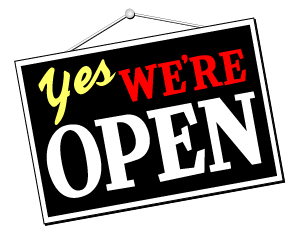 If you haven’t heard the term yet, you will soon. Starbucks and Dell both do it. Last year’s $1 million Netflix prize (for a better algorithm for film recommendations) was seen by many as a victory for crowdsourcing — this is, using the wisdom and labor of a crowd for creative or other services. Ideas for ads, for services or new products have all been generated in this way, and there are may companies in business today to help you invite and reward participants. As a creative, part of me considers this approach much like a huge brainstorming session — it may well deliver gold… but you’ve got to weed through a whole lot of dross to get to it. If it’s there at all.
If you haven’t heard the term yet, you will soon. Starbucks and Dell both do it. Last year’s $1 million Netflix prize (for a better algorithm for film recommendations) was seen by many as a victory for crowdsourcing — this is, using the wisdom and labor of a crowd for creative or other services. Ideas for ads, for services or new products have all been generated in this way, and there are may companies in business today to help you invite and reward participants. As a creative, part of me considers this approach much like a huge brainstorming session — it may well deliver gold… but you’ve got to weed through a whole lot of dross to get to it. If it’s there at all.
It’s not that great ideas can’t come from unexpected places. They can, and do.
Crowdsourcing is based on the idea that a large crowd is better than a single expert. and that a crowd working on a good idea can truly be powerful. The term was coined by Jeff Howe for an article in the June 2006 issue of Wired. The article (followed up by a book in 2008) makes the point that since technology has advanced so that we all have the latest techno tools right at hand, the difference between professionals and amateurs has diminished. Companies can now easily take advantage of the skills and latent talents of the public.
As a business, crowdsourcing can do a lot for you…
- you tap a broader range of talent
- a problem can be broadcast to a wider range of people
- you get first hand insight into customer wants/needs
- you don’t have to pay for anything you get, though you can announce a winner and offer a small prize
- build loyalty for you in the community
But, on the downside…
- risk that a crowdsourced project will fail because of lack of motivation, too few participants, the quality of the work or other factors
- no written contracts agreements are made
- hard to keep the relationship with these workers for the length of the project
- the costs of bringing a crowdsourced project to an acceptable conclusion
Just recently LiveWorld launched a Facebook application, Idea Power 2.0, that brings crowdsourcing onto the wildly popular site that claims an estimated 500 million users. Companies will now have access to all that marketing, research and product development know-how just waiting to be tapped. Another you may have seen is YouTube’s use of Google Moderator (a little known product launched back in 2008) to get viewers and content creators talking. Today you can add it to your channel and customize the features so that it’s easy for your viewers to reply with comments or ideas.
In case you can’t judge by my tone, as a creative professional, I don’t like crowdsourcing… no, not one bit. I galls me to think of companies getting any ideas for free, with no promise that the “winner” gets anything other than the glory of the victory and lifetime bragging rights. It cheapens what professionals in creative fields do… the inspiration, the imagination, the heart and soul that go into our work— this kind of exploitation isn’t good for anyone.
The only benefit I can see coming from spec work is repeat business — proving your worth to potential clients/customers and having them hire you to do more.
As always, look hard enough and you find a silver lining. Crowdsourcing is being used for good… in an issue close to my heart, some organizations are using a crowdsourcing approach to do some critical work on the Gulf oil spill. InnoCentive is offering rewards to its network of 200,000 R&D experts for ideas that help solve the problem. Also involved, Crisis Commons has created Oil Reporter, a free iPhone/Android app that lets you upload photographs and other information to help authorities monitor the spread and effects of the spill. Neat.
We’d be interested in your experiences of crowdsourcing? Have you participated? Are you wary of giving your talent to a corporation for free? Has your company used these techniques… and what happened?


